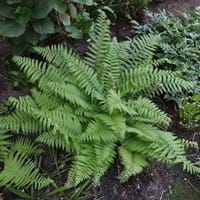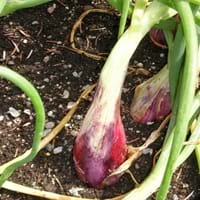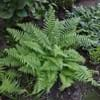Life Span
Perennial
Annual
Origin
Europe, Eastern Europe, Southern Europe, Western Europe, Turkey
Asia
Types
Not Available
Not Available
Habitat
Shady Edge, Woodland Garden Dappled Shade
Not Available
USDA Hardiness Zone
6-9
4-8
Sunset Zone
4, 5, 6, 7, 8, 9, 14, 15, 16, 17, 18, 19, 20, 21, 22, 23, 24
A1, A2, A3, H1, H2, 1a, 1b, 2a, 2b, 3a, 3b, 4, 5, 6, 7, 8, 9, 10, 11, 12, 13, 14, 15, 16, 17, 18, 19, 20, 21, 22, 23, 24
Habit
Clump-Forming
Clump-Forming
Flower Color
Not Available
White
Flower Color Modifier
Bicolor
Bicolor
Fruit Color
Not Available
Not Available
Leaf Color in Spring
Green
Green, Light Green
Leaf Color in Summer
Dark Green
Green, Light Green, Chartreuse
Leaf Color in Fall
Dark Green
Green, Yellow green
Leaf Color in Winter
Dark Green
Not Available
Leaf Shape
Saw-tooth like
Acicular
Plant Season
Spring, Summer, Fall, Winter
Summer
Sunlight
Full Shade, Partial shade
Full Sun, Partial Sun
Type of Soil
Clay, Loam
Loam, Sand
The pH of Soil
Neutral, Alkaline
Neutral
Soil Drainage
Well drained
Well drained
Bloom Time
All year
Summer
Tolerances
Drought, Dry Conditions, Light Frost, Shade areas, Variety of soil types
Drought
Where to Plant?
Ground
Ground
How to Plant?
Divison, From Rhizomes, Spores
Cuttings
Plant Maintenance
Medium
Medium
Watering Requirements
when new, water every week
Average Water Needs
In Summer
Lots of watering
Lots of watering
In Spring
Moderate
Moderate
In Winter
Average Water
Average Water
Soil pH
Neutral, Alkaline
Neutral
Soil Type
Clay, Loam
Loam, Sand
Soil Drainage Capacity
Well drained
Well drained
Sun Exposure
Full Shade, Partial shade
Full Sun, Partial Sun
Pruning
Remove damaged leaves, Remove dead branches, Remove dead leaves
Remove damaged leaves, Remove dead branches, Remove dead leaves
Fertilizers
All-Purpose Liquid Fertilizer
All-Purpose Liquid Fertilizer
Pests and Diseases
Red blotch
Red blotch
Plant Tolerance
Drought
Drought
Flowers
Not Available
Showy
Flower Petal Number
Single
Single
Fragrant Bark/Stem
No
Yes
Foliage Texture
Fine
Medium
Foliage Sheen
Glossy
Matte
Invasive
Not Available
No
Attracts
Birds, Butterflies, Hummingbirds
Aphids, Beetles
Allergy
Not Available
Cold, Irritate the mucus membrane, Sinuses
Aesthetic Uses
Cottage Garden, Showy Purposes
Not Available
Beauty Benefits
Good for skin
Not Available
Environmental Uses
Air purification
Air purification
Medicinal Uses
Poultice, Sore throat, Tonsillitis
anti-inflammatory, Antiseptic, Antispasmodic, Hypotensive
Part of Plant Used
Leaves, Root, Stem
Flowers, Leaves, Root
Other Uses
Used as Ornamental plant, Used for its medicinal properties
Cosmetics, Used as a dye
Used As Indoor Plant
No
No
Used As Outdoor Plant
Yes
Yes
Garden Design
Bedding Plant, Container, Feature Plant, Houseplant, Tropical, Water Gardens
Edible, Herb / Vegetable
Botanical Name
POLYSTICHUM setiferum
ALLIUM cepa( Aggregatum Group)
Common Name
Alaska fern
Scallion, Shallot
In Hindi
Soft Shield Fern
Shallot
In German
Grannen-Schildfarn
Schalotte
In French
Soft Shield Fern
échalote
In Spanish
Soft Shield Fern
chalote
In Greek
Soft Shield Fern
είδος κρεμμυδιού
In Portuguese
Soft Shield Fern
Sallot
In Polish
Soft Shield Fern
Sallot
In Latin
Soft Shield Fern
Sallot
Phylum
Pteridophyta
Tracheophyta
Class
Filicopsida
Magnoliopsida
Order
Polypodiales
Asparagales
Family
Dryopteridaceae
Liliaceae
Clade
Not Available
Angiosperms, Monocots
Tribe
Not Available
Not Available
Subfamily
Not Available
Not Available
Number of Species
Not Available
Importance of Soft Shield Fern and Shallot
Want to have the most appropriate plant for your garden? You might want to know the importance of Soft Shield Fern and Shallot. Basically, these two plants vary in many aspects. Compare Soft Shield Fern and Shallot as they differ in many characteristics such as their life, care, benefits, facts, etc. Every gardener must at least have the slightest clue about the plants he wants to plant in his garden. Compare their benefits, which differ in many ways like facts and uses. The medicinal use of Soft Shield Fern is Poultice, Sore throat and Tonsillitis whereas of Shallot is anti-inflammatory, Antiseptic, Antispasmodic and Hypotensive. Soft Shield Fern has beauty benefits as follows: Good for skin while Shallot has beauty benefits as follows: Good for skin.
Compare Facts of Soft Shield Fern vs Shallot
How to choose the best garden plant for your garden depending upon its facts? Here garden plant comparison will help you to solve this query. Compare the facts of Soft Shield Fern vs Shallot and know which one to choose. As garden plants have benefits and other uses, allergy is also a major drawback of plants for some people. Allergic reactions of Soft Shield Fern are Not Available whereas of Shallot have Cold, Irritate the mucus membrane and Sinuses respectively. Having a fruit bearing plant in your garden can be a plus point of your garden. Soft Shield Fern has no showy fruits and Shallot has no showy fruits. Also Soft Shield Fern is not flowering and Shallot is not flowering . You can compare Soft Shield Fern and Shallot facts and facts of other plants too.





